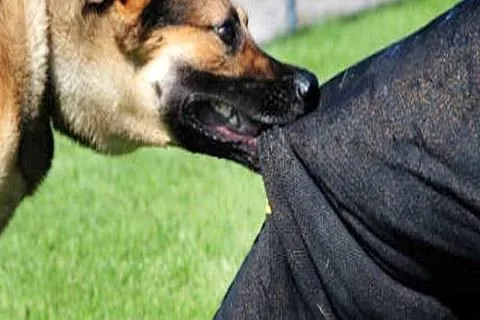Development and raising of the dogs dates back 12000-14000years and since that time man has been relishing the company of canine and thelatter have played a variety of roles in human communities ranging from actingas scavengers of waste, detection and alarm systems against intruders, crucialmembers of hunting parties, rescue the drowning, leading blind, hearing deaf,help catching culprits, sniff out bombs and die for us in war time, protect ourhomes and have been herders of livestock. Dog bites are a serious consequentialpublic health issue that foist considerable physical and psychological damageon victims and incurs innumerable masked costs to mankind. Large scalecontraception to dogs humanely, efficiently, with minimal technicalrequirements, and cost effectively is the key to dog welfare, public health,and environmental protection. The availability of a long actingimmunocontraceptive vaccine which could be administered by lay technicians inthe field would be a powerful tool for control. The untrammelled growths of a dog population have a negative impact onpublic health and create socioeconomic and animal welfare problems. Freeroaming dogs not only transmit diseases to livestock and humans but also put athreat to human lives in the form of dog bites and produce nuisance in the formof barking and griming fields. As weare aware of the fact that to perform a single dog surgery it requires a huge amount of cost fromsedation/anaesthesia of dog up to post operative care. For the cost effectivemanagement the tool available with us is to replace surgery with the use ofchemical compounds because of its potential to be more cost effective thansurgical sterilization.
Research has shown that intratesticular injection of variousapproved chemicals such as calcium chloride, Zinc gluconate, and hypertonicsodium chloride (NaCl) solution lead to necrosis, fibrosis & degenerationof seminiferous tubules & Leydig cells, thus eliminating the production ofspermatozoa, testosterone & sperm counts in a dose-dependent manner in maledogs. As far as the sterilization of bitches is concerned there is no permanentform of chemical neutering for the female but recently a study on heifersconducted by Cavaleri and Hayes 2017, show that following administration ofcalcium chloride in ethanol transvaginally, and intraovarian initiate completeovarian atrophy without apparent pain.
Utilising canines further for biomedical Research
It is an established fact that the results obtained fromanimal experiments apply to humans as human biology is very much like that ofmany other animals and the similarity of functions of various organs- heart, lungs, liver, etc which work in thesame way as they do in humans make dogs as role models for safety testing ofchemicals and drugs, study of genetic disorders, development of new diagnostictests for diseases in biology and medical education.
Dogs play a vital role in biomedical research from drugtesting to liver transplantations. Naturally occurring bladder cancer in dogs very closely resemble humanbladder cancer, and also mimic biological behavior, including frequency ofmetastasis, sites and response to therapy thus experiments on dogs can improveearlier detection and intervention, prediction of patient outcome, and more effectivemanagement overall. Dogs develop cardiac problems like those experienced byhuman, and play a major role in the development of surgical procedures forheart valve and artery replacement and angioplasty. Apart from cardiovascularsurgery, dogs have been extensively used in orthopaedics in studies offracture, bone defect, prosthetic infections, development of prosthetic devicesfor hip & knee, tendon & ligament repair, osteomylitis, osteoporosis inolder dogs, osteoarthritis, cartilage biology & various spinal procedures.As per study reports of Hugen et.al2016 it documents that the caninegastric carcinoma may serve as a valuable model for human gastric carcinomabecause of similarities in diagnosis, histology, clinical presentation, andprognosis of the disease. Dogs, inparticular, suffer from environmental skin allergies and develop a clinicaldisposition which is very similar to dermatitis and eczema in human beings.Thus, dogs are a very handy species to improve our understanding on the mechanismsinvolved in human allergies and hypersensitivity reactions (Robert 2018).
Tail piece
Dog killing, past trend ceased subsequent to imposition ofban, is still a requirement particularly in the current horrible scenario, somewould argue. Yet to be on the safer side sterilization as discussed nowadays isthe best alternative available to curb the menace and from all the abovescientific evidences we can assume that there is a wide range of scope ofsterilised and free roaming dogs in medical science as well. Modification inongoing ABC programme is the need of hour and requirement of a speciallydesigned canine cell is to be constituted & the animals sterilised are notto be allowed to take on streets but to put to further use for research purposehowever care has to be taken that animals are managed and cared under theblanket of uniform acceptable standards and animal ethics.
Author is Veterinary Assistant Surgeon Govt of J&K (Mvsc. Surgery))






